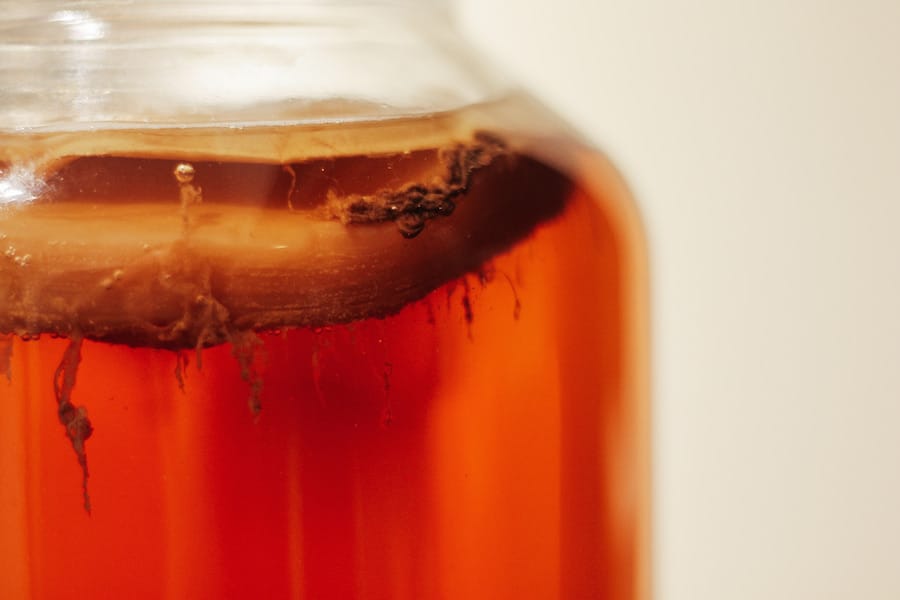If you buy something through a link in our posts, we may get a small share of the sale.
The trub is the layer of yeast and other solids that form during fermentation and settle at the bottom of your fermenter. They can give your beer an off flavor if left in, so it’s essential to understand how to dump trub from a conical fermenter before bottling or kegging your beer.
Contents
How to Dump Trub From the Conical Fermenter
The best way to dump the trub from your conical fermenter is to chill it down in your beer fridge to about 34-38° Fahrenheit. This will cause the trub to settle at the bottom of the cone, making it easy to remove. Next, slowly open the valve at the bottom of the cone and let the beer flow into a sanitized bucket or carboy. Be careful not to disturb the trub too much, as this can cause it to be reintroduced into the beer.
Also, ensure you balance the pressure to avoid oxygenation. Most brewers will use a blowoff tube connected to the airlock while dumping trub to avoid any issues and ensure the process goes smoothly. Once all the beer is transferred, close the valve and discard the trub. You can now bottle or keg your beer as normal!
Remember always to dump the trub before packaging to avoid any off-flavors in your final product. The entire process requires some basic understanding of brewing beer and some simple pieces of equipment that are already in your brewing arsenal. Having a conical fermenter is quite handy for home brewers, and you can even build one yourself to ensure that you are brewing a trub-free and delicious beer.

Step by Step Instructions on How to Dump Trub From Conical
This process is important in making sure your beer turns out clear and tastes great. By removing the trub (the sediment that settles at the bottom of your fermenter), you will also be removing unwanted flavors that can ruin your beer. The following steps will show you how to remove the trub from your conical fermenter properly.
Place Your Fermenter on a Stable Surface
Placing your fermenter on a stable surface is important, as you don’t want it tipping over and spilling your beer everywhere. A kitchen counter or a table are both good options. You don’t want to be too far away from your sink, as you’ll need to sanitize the fermenter after dumping the trub.
Chill the Fermenter
Chilling the fermenter will help to keep the trub in the bottom of the cone and make it easier to dump out. You can place the fermenter in your fridge for a few hours or in a cold water bath. Ensure to control the heat and have the temperature range from 34-40°F to avoid any off-flavors in your beer.
Sanitize Everything That Will Come Into Contact With Your Beer
Before you start dumping the trub, it’s important to sanitize everything that will come into contact with your beer. This includes your hands, the fermenter, the bucket, and the siphon. You don’t want to contaminate your beer with bacteria or wild yeast, to be on the safe side always have Campden tablets ready.
There are a few different ways to sanitize your equipment. One option is to use a no-rinse sanitizer or warm water that has been boiled and cooled. Another option is to use isopropyl alcohol (rubbing alcohol).
Start Siphoning the Beer
Once everything is sanitized, it’s time to start siphoning the beer. Place the bucket on a stable surface next to the fermenter. Insert the siphon into the fermenter, making sure not to disturb the trub too much.
Start the flow of beer by sucking on the siphon. Once the beer is flowing, place the other end of the siphon into the bucket. Let the beer flow until it starts to get cloudy. This is usually around the 1/3 to 1/2 mark or when about 1-2 inches of beer is left in the fermenter.
Use an air-tight lid or a piece of aluminum foil to cover the bucket. This will prevent oxygen from getting into the beer and causing off-flavors. You don’t want to have to worry about the trub getting into your beer when you transfer it to a keg or bottle. You will still want to filter it before serving.
Discard the Trub
Once most of the beer has been siphoned off, it’s time to dump the trub. The easiest way to do this is to tilt the fermenter and let the trub slide out into the sink. You can also use a ladle or spoon to scoop it out. Ensure that the trub doesn’t come into contact with the beer that’s left in the fermenter.
Many brewers like to save the trub and use it as compost or as a source of nutrients for their plants. If you’re going to do this, ensure you get to store it in a clean, airtight container to avoid contamination.
Rinse Out the Fermenter
Once the trub has been removed, it’s time to rinse out the fermenter. This will remove any residual trub, dry hops, and beer that’s left behind. Place the fermenter under the tap and let the water flow in. Swirl it around to ensure all the nooks and crannies are getting rinsed out.
Once you’re satisfied that the fermenter is clean, place the lid on and store it in a cool, dark place until you’re ready to use it again. Still, you can now enjoy your beer knowing that you’ve removed all the trub, and it’s nice and clear!

Benefits of Dumping the Trub
Dumping the trub has many benefits that every brewer should be aware of and appreciate. The following are some of the main advantages of dumping the trub:
- It removes unwanted flavors from your beer: Trub can contribute to off-flavors in your beer, so it’s important to remove it before packaging or serving.
- It helps to improve the clarity of your beer: Trub can make your beer appear cloudy, so removing it will result in a clearer beer and a more professional appearance.
- It reduces the risk of infection: Trub can contain bacteria and wild yeast, which can lead to infections in your beer. Getting rid of the trub will help to reduce the risk of infection.
- It makes it easier to bottle or keg your beer: When you remove the trub, there’s less of a chance it will end up in your bottles or keg. This results in less waste and fewer sediment-filled glasses of beer.
- You can use the trub as compost: If you’re into gardening, you can use the trub as compost for your plants. This is a great way to recycle the trub and give your plants some extra nutrients.
- Trub can also be used as fish food: If you have a pond or aquarium, the trub can be used to feed your fish. Fish love the nutrients in trub, and it’s a great way to get rid of it.
Frequently Asked Questions
When Should I Remove Trub From Conical Fermenter?
The best time to remove the trub is towards the end of initial fermentation when the majority of the yeast has settled to the bottom. However, you can also remove it after secondary fermentation if you’re not planning on adding any more yeast to the beer.
What Do You Do With Trub?
Trub can be used as compost, fish food, or simply discarded. Many brewers like to save the trub and use it as a source of nutrients for their plants. Other people use trub to feed their fish and aquariums.
Can I Bottle My Beer Without Removing the Trub?
Yes, you can bottle your beer without removing the trub. However, it’s not recommended as the trub can contribute to off-flavors and make your beer appear cloudy. It’s best to remove the trub before bottling or serving.
Conclusion
Dumping trub is an important part of the brewing process, and there are many benefits to doing so. Trub can contribute to off-flavors, make your beer appear cloudy, and increase the risk of infection. By removing the trub, you can improve the flavor and clarity of your beer.

